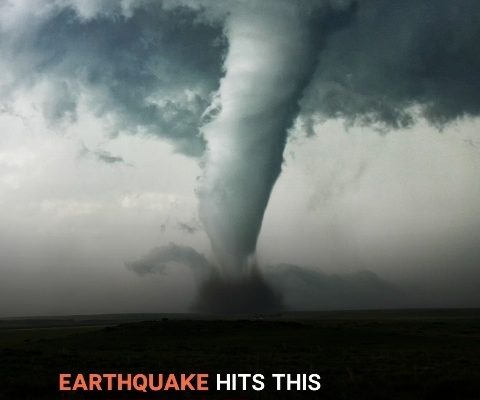After a deadly tornado outbreak tore through parts of the South and Midwest, an earthquake has now struck a southern state, adding to the chaos.
A deadly tornado outbreak that began Friday evening devastated parts of the South and Midwest, leaving at least 18 people dead. The storms intensified on Saturday, causing widespread destruction in Mississippi and Louisiana, and triggering a rare Tornado Emergency in Taylorsville, Mississippi.
Days before the event, the Storm Prediction Center (SPC) had issued its highest threat level, warning of possible EF4 or stronger tornadoes. The first twisters touched down in Arkansas and Missouri before the severe weather moved southward.
On Saturday alone, the SPC recorded over a dozen tornado reports, with Mississippi and Alabama bearing the brunt. Mississippi’s Walthall County saw at least two powerful tornadoes within 45 minutes.
In Tylertown, three deaths have been confirmed, though officials caution that the toll may rise as rescue teams continue searching through the debris. Initial surveys by the National Weather Service indicate some of the strongest tornadoes reached EF3 strength, with winds up to 165 mph.
Ongoing damage assessments could reveal even stronger tornadoes. As of Saturday afternoon, more than 50,000 customers across Louisiana, Mississippi, and Alabama were without power. The severe weather threat is expected to continue into Sunday, affecting nearly 70 million people from the Northeast to Florida.
Adding to the devastation, an earthquake struck Mississippi as the state was still reeling from the powerful tornado outbreak. The seismic event further complicated rescue and recovery efforts, with officials working to assess the full extent of the damage caused by both natural disasters.
However, the severity of destruction depends on multiple factors beyond just the earthquake’s magnitude. Variables such as proximity to the epicenter, soil composition, and structural integrity of buildings all play crucial roles.
Generally, significant damage is not expected unless an earthquake registers above a magnitude of 4 or 5, but local conditions can amplify its impact. Authorities are continuing assessments to determine the full extent of the situation.
This earthquake comes amid a string of severe weather events across the country. Four earthquakes struck near Hayward, California, on Thursday, February 13, 2025, according to the U.S. Geological Survey (USGS).
The quakes, ranging from magnitude 2.7 to 3.6, occurred within a small area 2 kilometers east of Hayward at depths between 3.3 and 3.9 miles. The first earthquake of the day, a magnitude 2.7, occurred at 13:03 UTC (5:03 a.m. PST).
Two more quakes, a 3.3 magnitude at 19:52 UTC (11:52 a.m. PST) and a 3.2 magnitude at 19:54 UTC (11:54 a.m. PST), struck just two minutes apart. Meanwhile, the USGS reported that the strongest quake, a magnitude 3.6, was recorded at 21:59 UTC (1:59 p.m. PST) at a depth of 3.6 miles.

